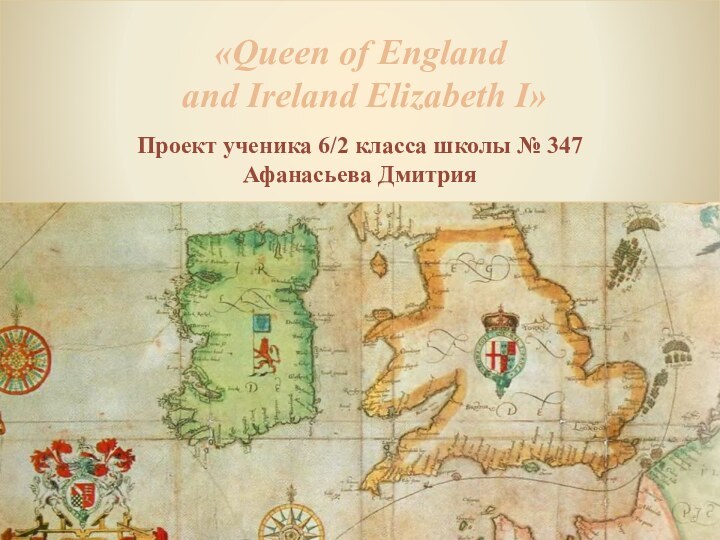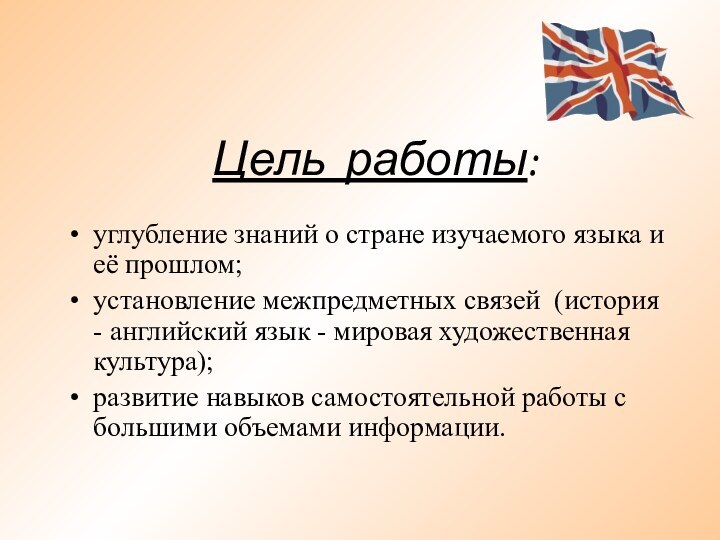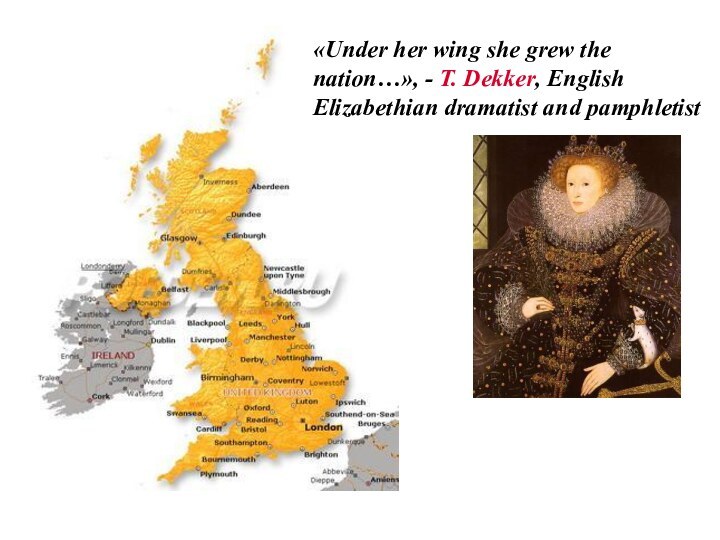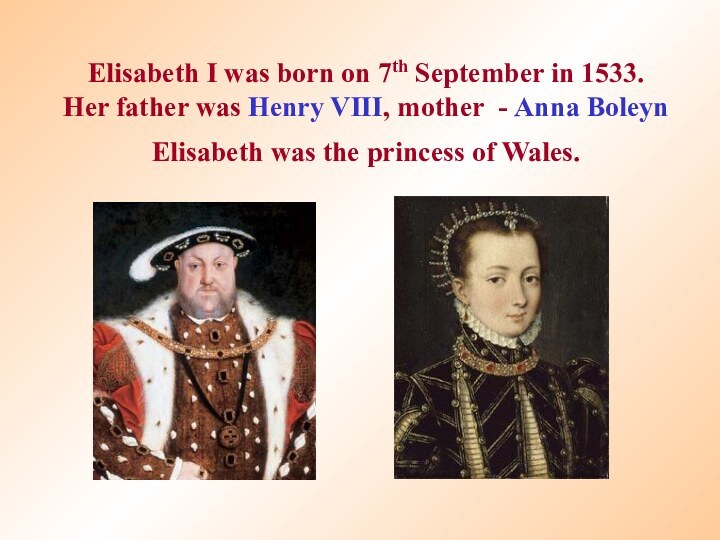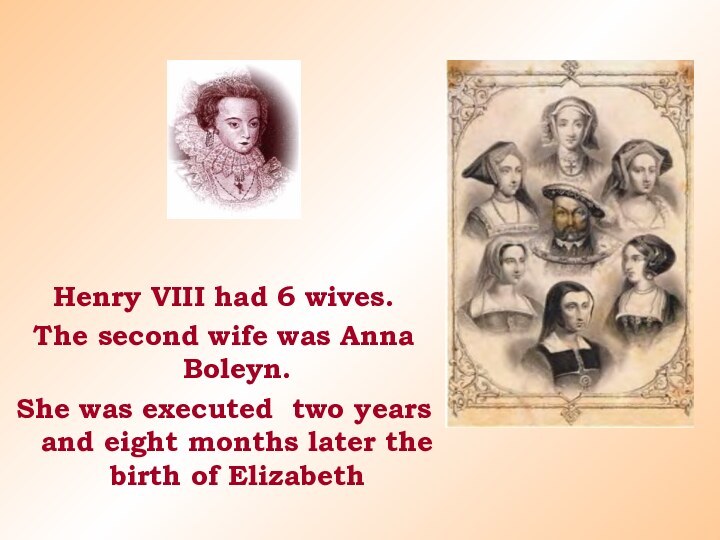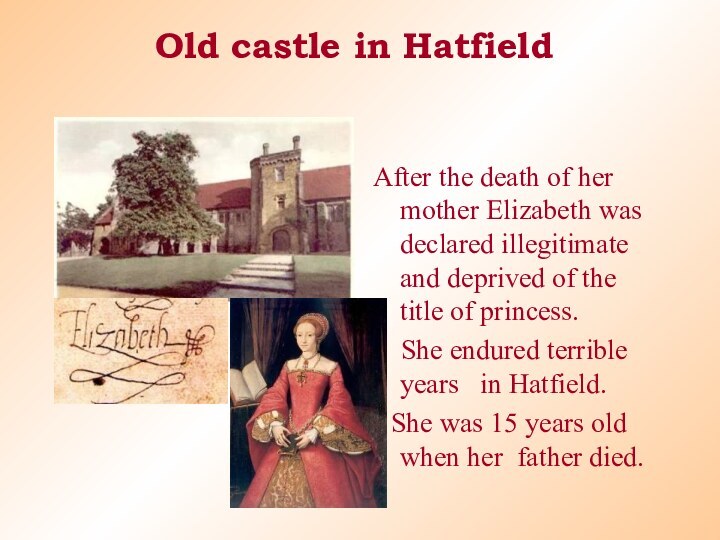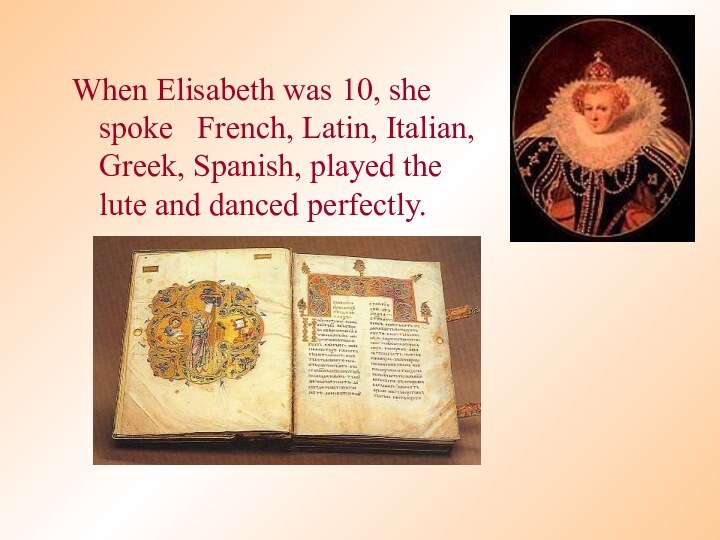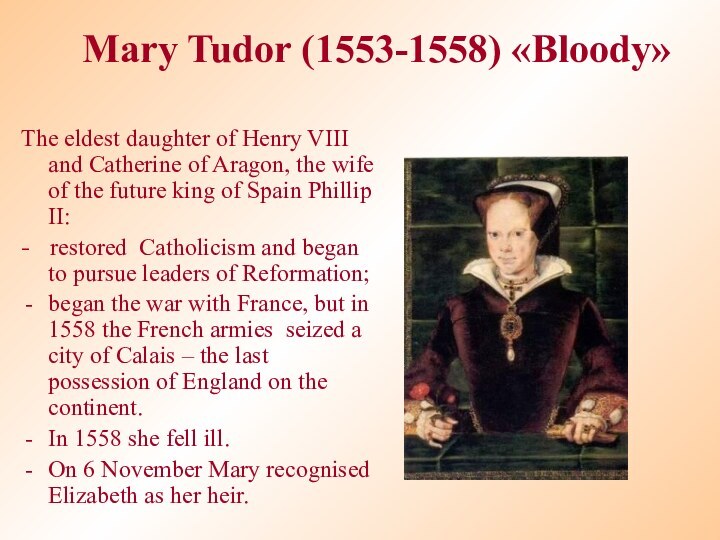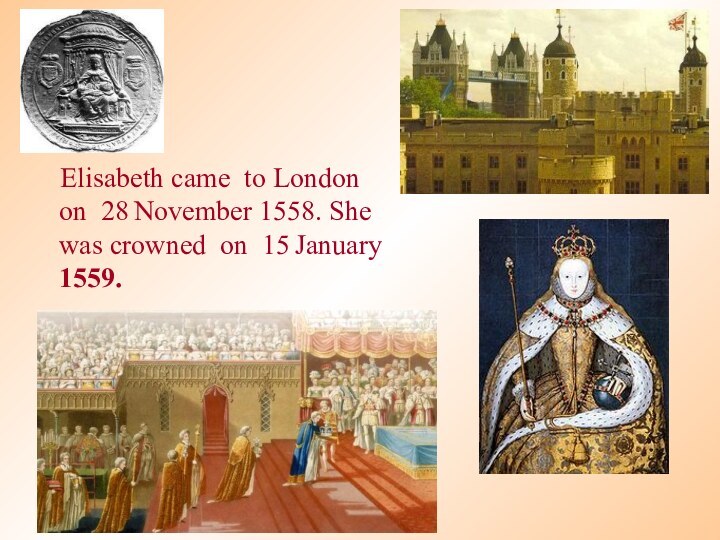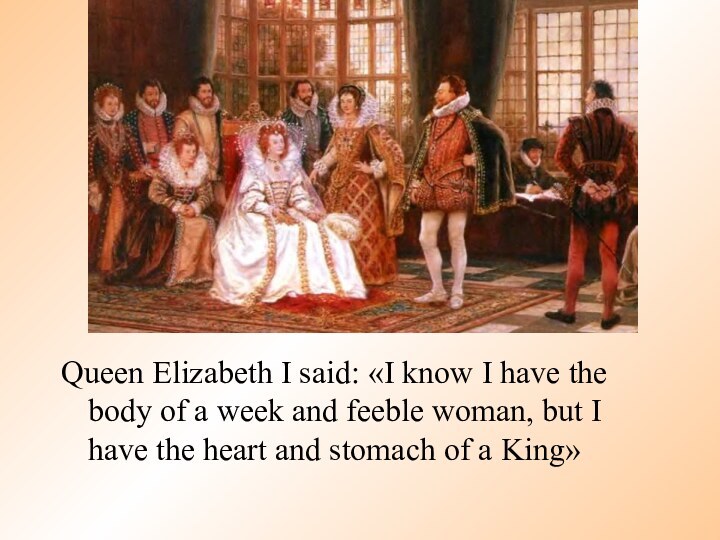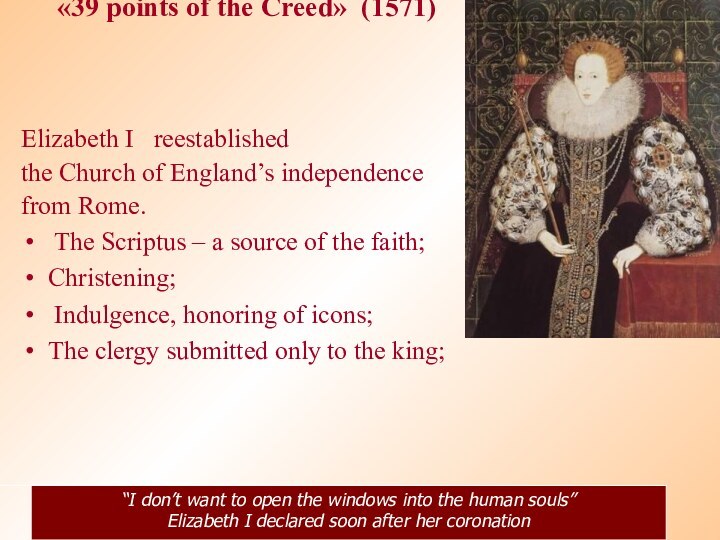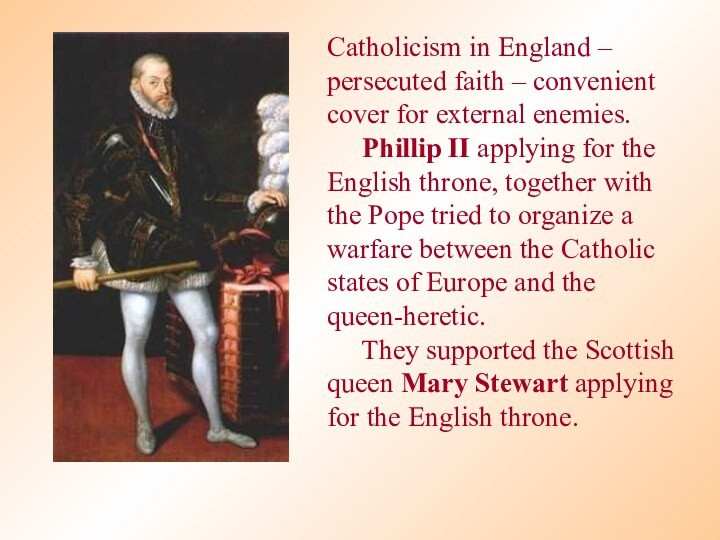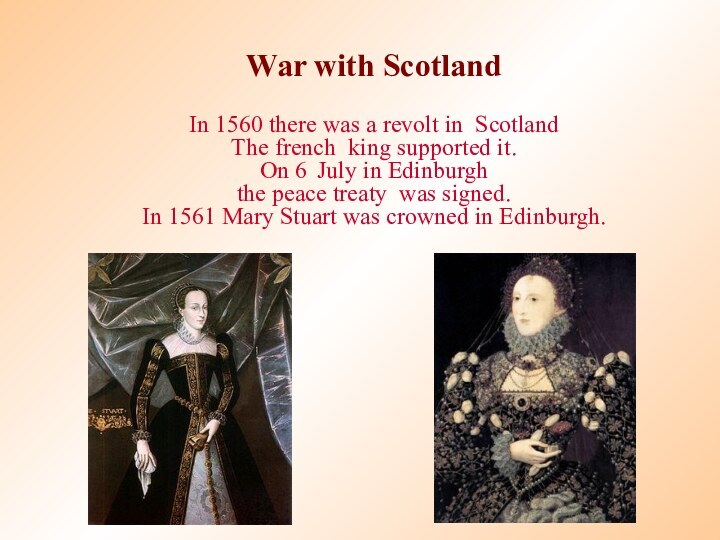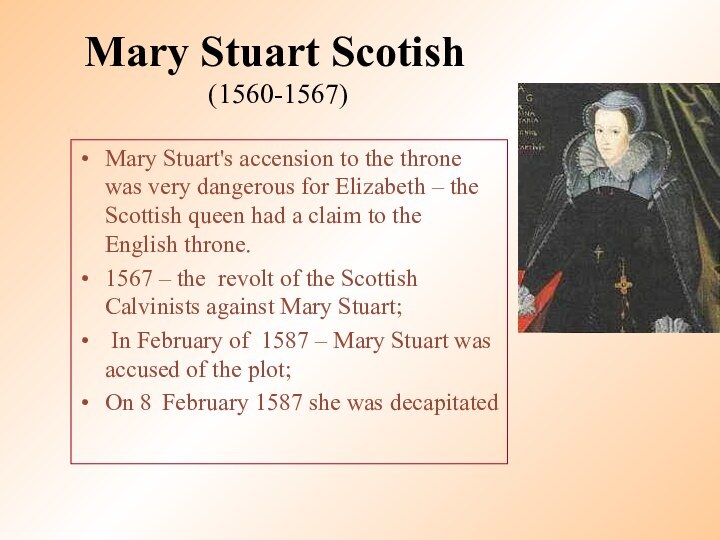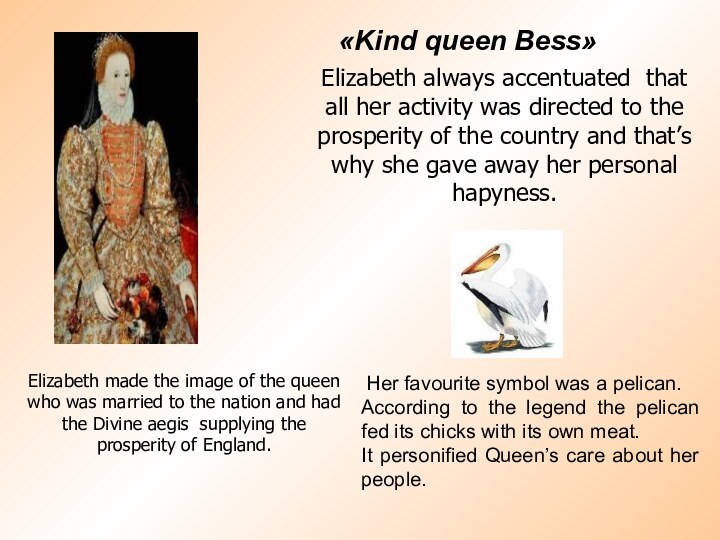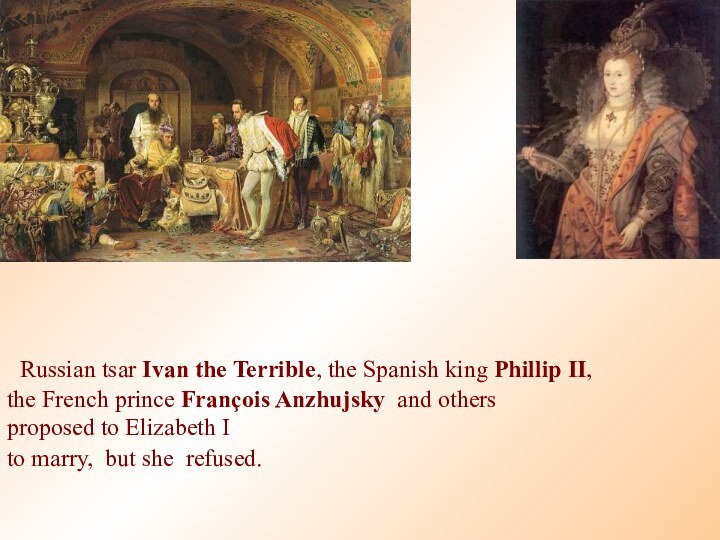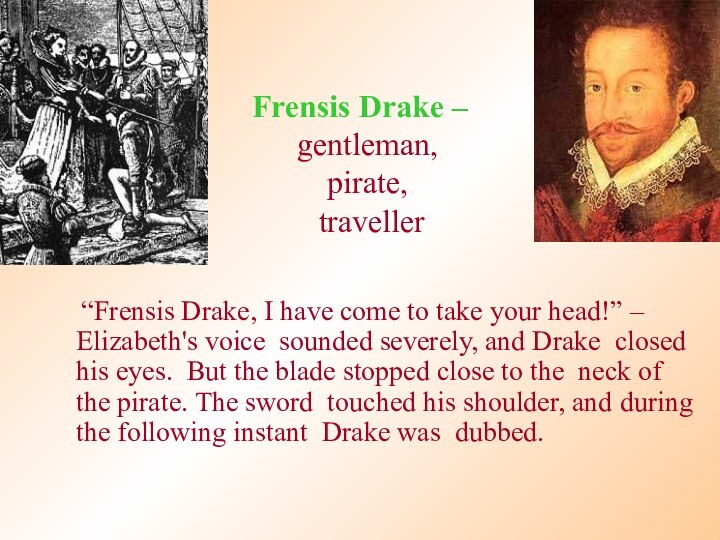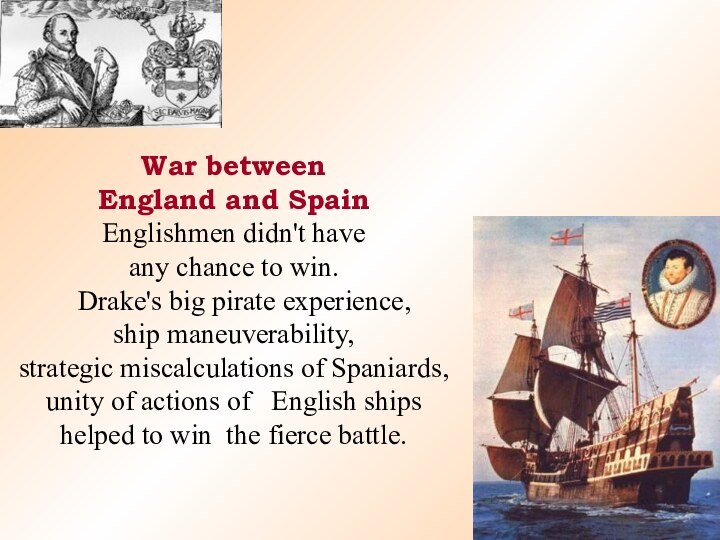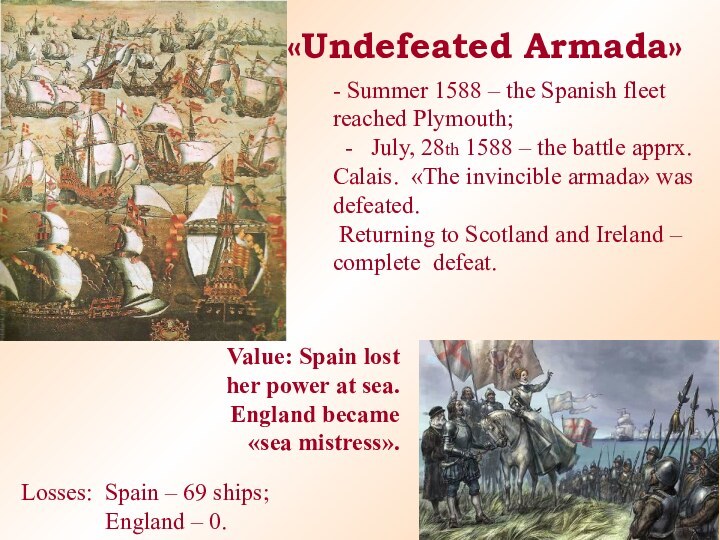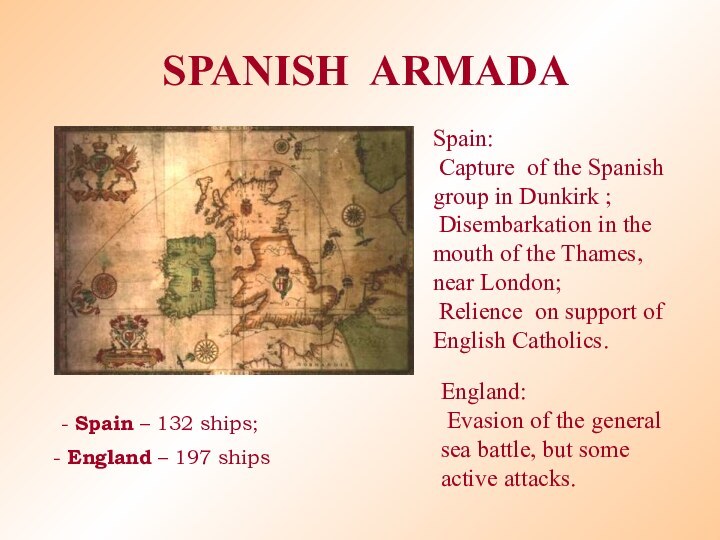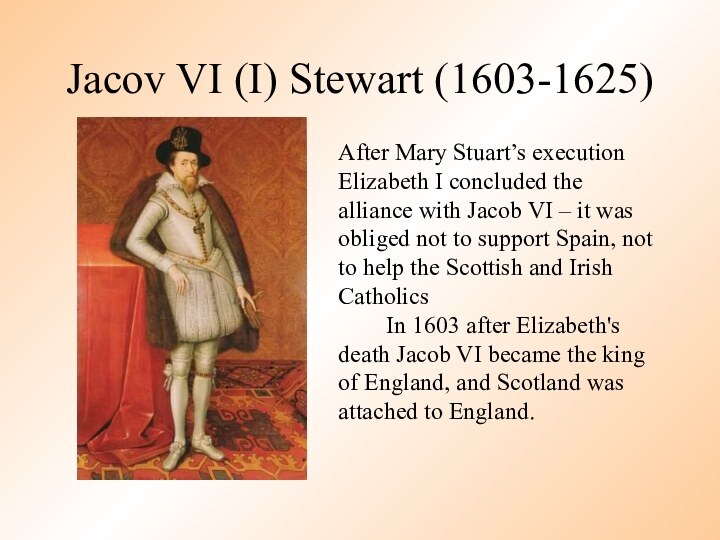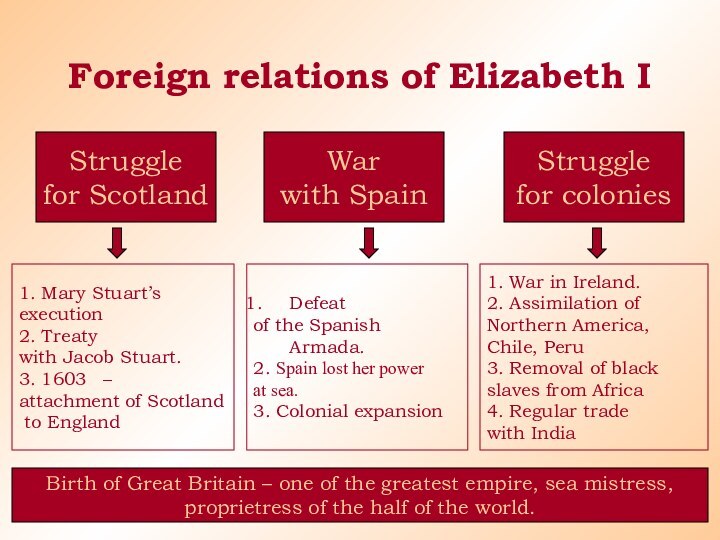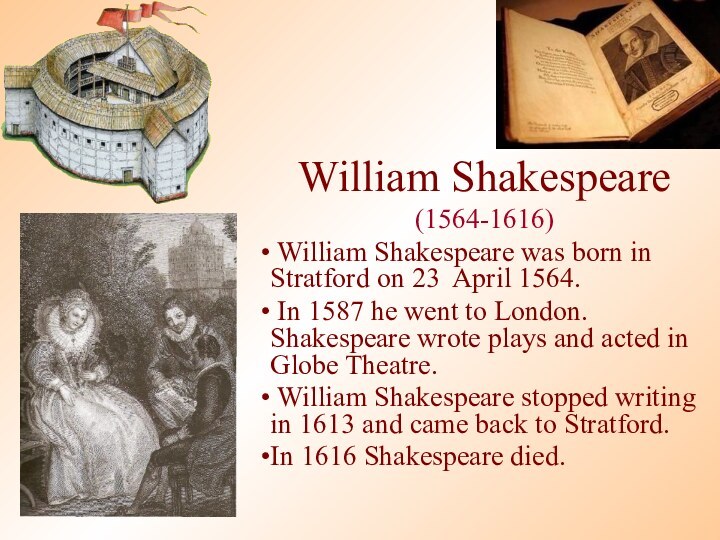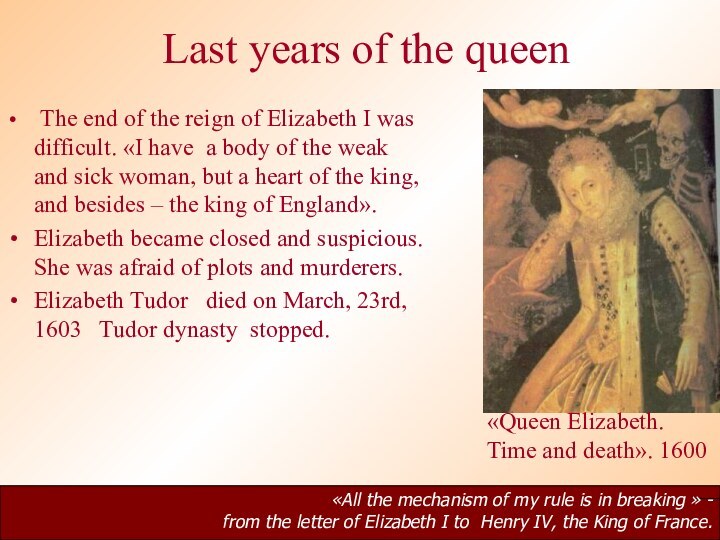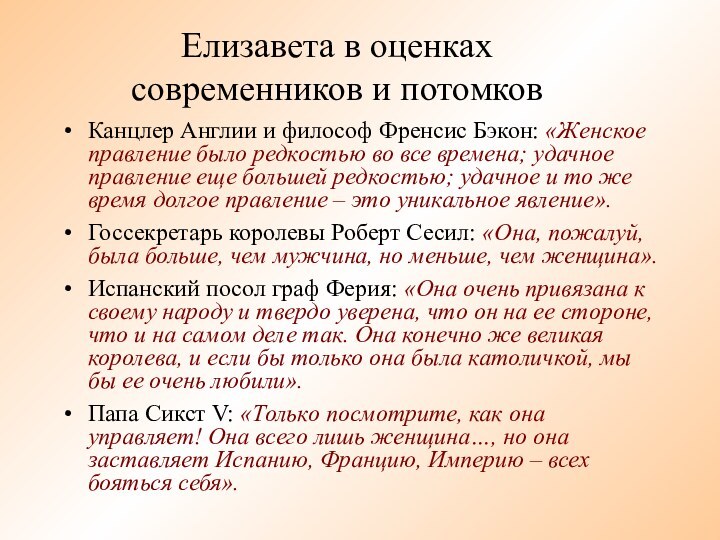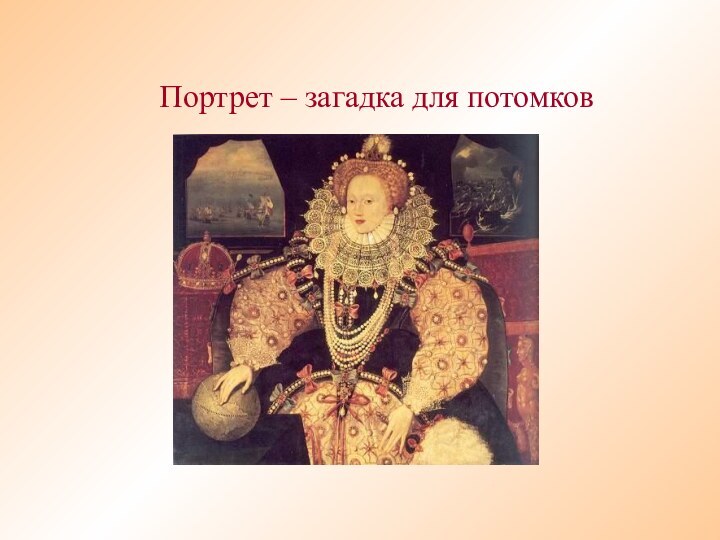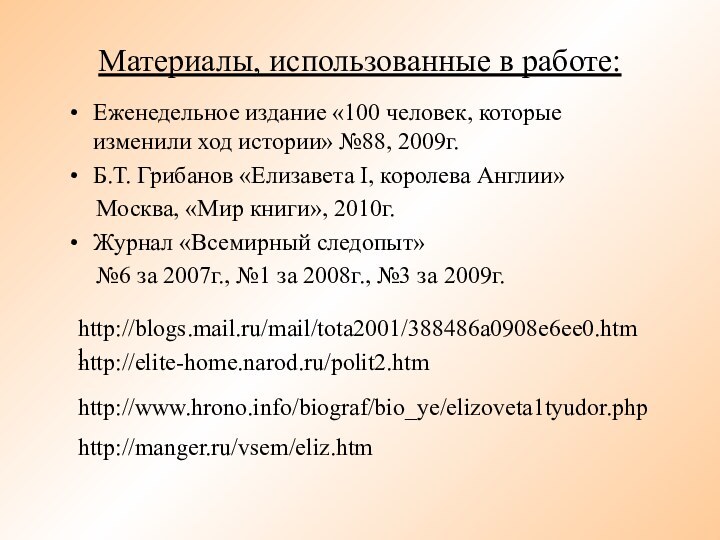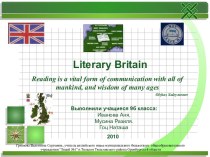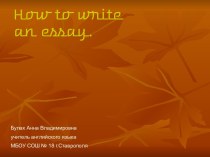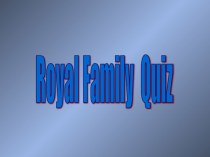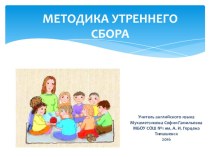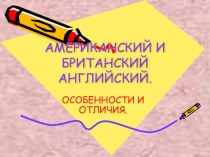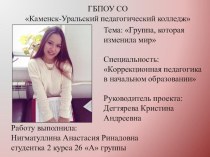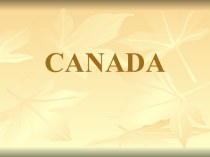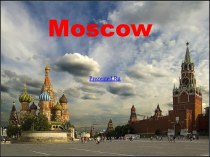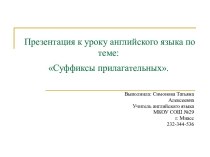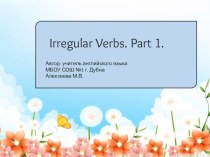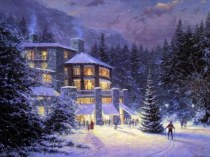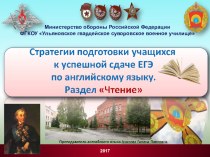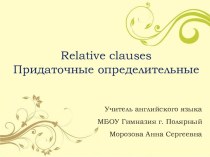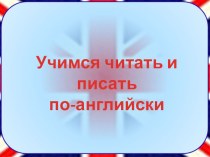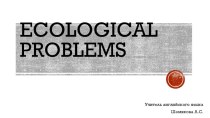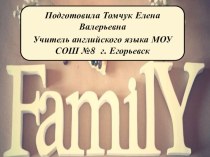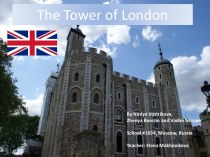Слайд 2
Цель работы:
углубление знаний о стране
изучаемого языка и её прошлом;
установление межпредметных связей (история -
английский язык - мировая художественная культура);
развитие навыков самостоятельной работы с большими объемами информации.
Слайд 3
«Under her wing she grew the nation…», -
T. Dekker, English Elizabethian dramatist and pamphletist
Слайд 4
Elisabeth I was born on 7th September in
1533.
Her father was Henry VIII, mother - Anna Boleyn
Elisabeth was the princess of Wales.
Слайд 5
Henry VIII had 6 wives.
The second wife was
Anna Boleyn.
She was executed two years and eight
months later the birth of Elizabeth
Слайд 6
Old castle in Hatfield
After the death of her
mother Elizabeth was declared illegitimate and deprived of the
title of princess.
She endured terrible years in Hatfield.
She was 15 years old when her father died.
Слайд 7
When Elisabeth was 10, she spoke French,
Latin, Italian, Greek, Spanish, played the lute and danced
perfectly.
Слайд 8
Mary Tudor (1553-1558) «Bloody»
The eldest daughter of Henry
VIII and Catherine of Aragon, the wife of the
future king of Spain Phillip II:
- restored Catholicism and began to pursue leaders of Reformation;
began the war with France, but in 1558 the French armies seized a city of Calais – the last possession of England on the continent.
In 1558 she fell ill.
On 6 November Mary recognised Elizabeth as her heir.
Слайд 9
Elisabeth came to London
on 28 November 1558. She was crowned on 15
January 1559.
Слайд 10
Queen Elizabeth I said: «I know I have
the body of a week and feeble woman, but
I have the heart and stomach of a King»
Слайд 11
«39 points of the Creed» (1571)
Elizabeth I
reestablished
the Church of England’s independence
from Rome.
The
Scriptus – a source of the faith;
Christening;
Indulgence, honoring of icons;
The clergy submitted only to the king;
“I don’t want to open the windows into the human souls”
Elizabeth I declared soon after her coronation
Слайд 12
Catholicism in England – persecuted faith – convenient
cover for external enemies.
Phillip II applying
for the English throne, together with the Pope tried to organize a warfare between the Catholic states of Europe and the queen-heretic.
They supported the Scottish queen Mary Stewart applying for the English throne.
Слайд 13
War with Scotland
In 1560 there was a revolt
in Scotland
The french king supported it.
On 6
July in Edinburgh
the peace treaty was signed.
In 1561 Mary Stuart was crowned in Edinburgh.
Слайд 14
Mary Stuart Scotish
(1560-1567)
Mary Stuart's accension to the
throne was very dangerous for Elizabeth – the Scottish
queen had a claim to the English throne.
1567 – the revolt of the Scottish Calvinists against Mary Stuart;
In February of 1587 – Mary Stuart was accused of the plot;
On 8 February 1587 she was decapitated
Слайд 15
Her favourite symbol was a pelican.
According to
the legend the pelican fed its chicks with its
own meat.
It personified Queen’s care about her people.
«Kind queen Bess»
Elizabeth made the image of the queen who was married to the nation and had the Divine aegis supplying the prosperity of England.
Elizabeth always accentuated that all her activity was directed to the prosperity of the country and that’s why she gave away her personal hapyness.
Слайд 16
Russian tsar Ivan the Terrible, the Spanish
king Phillip II,
the French prince François Anzhujsky and
others
proposed to Elizabeth I
to marry, but she refused.
Слайд 17
Frensis Drake –
gentleman,
pirate,
traveller
“Frensis Drake, I have come to take
your head!” – Elizabeth's voice sounded severely, and Drake closed his eyes. But the blade stopped close to the neck of the pirate. The sword touched his shoulder, and during the following instant Drake was dubbed.
Слайд 18
War between
England and Spain
Englishmen didn't have
any
chance to win.
Drake's big pirate experience,
ship
maneuverability,
strategic miscalculations of Spaniards, unity of actions of English ships helped to win the fierce battle.
Слайд 19
«Undefeated Armada»
- Summer 1588 – the Spanish fleet
reached Plymouth;
- July, 28th 1588 –
the battle apprx. Calais. «The invincible armada» was defeated.
Returning to Scotland and Ireland – complete defeat.
Losses: Spain – 69 ships;
England – 0.
Value: Spain lost
her power at sea.
England became
«sea mistress».
Слайд 20
SPANISH ARMADA
- Spain – 132 ships;
England
– 197 ships
Spain:
Capture of the Spanish group in
Dunkirk ;
Disembarkation in the mouth of the Thames, near London;
Relience on support of English Catholics.
England:
Evasion of the general sea battle, but some active attacks.
Слайд 21
Jacov VI (I) Stewart (1603-1625)
After Mary Stuart’s execution Elizabeth I concluded the alliance
with Jacob VI – it was obliged not to support Spain, not to help the Scottish and Irish Catholics
In 1603 after Elizabeth's death Jacob VI became the king of England, and Scotland was attached to England.
Слайд 22
Foreign relations of Elizabeth I
Struggle
for Scotland
War
with
Spain
Struggle
for colonies
1. Mary Stuart’s
execution
2. Treaty
with Jacob
Stuart.
3. 1603 –
attachment of Scotland
to England
Defeat
of the Spanish Armada.
2. Spain lost her power
at sea.
3. Colonial expansion
1. War in Ireland.
2. Assimilation of
Northern America,
Chile, Peru
3. Removal of black
slaves from Africa
4. Regular trade
with India
Birth of Great Britain – one of the greatest empire, sea mistress,
proprietress of the half of the world.
Слайд 23
William Shakespeare
(1564-1616)
William Shakespeare was born in Stratford
on 23 April 1564.
In 1587 he went
to London. Shakespeare wrote plays and acted in Globe Theatre.
William Shakespeare stopped writing in 1613 and came back to Stratford.
In 1616 Shakespeare died.
Слайд 24
Last years of the queen
The end of
the reign of Elizabeth I was difficult. «I have
a body of the weak and sick woman, but a heart of the king, and besides – the king of England».
Elizabeth became closed and suspicious. She was afraid of plots and murderers.
Elizabeth Tudor died on March, 23rd, 1603 Tudor dynasty stopped.
«Queen Elizabeth. Time and death». 1600
«All the mechanism of my rule is in breaking » -
from the letter of Elizabeth I to Henry IV, the King of France.
Слайд 25
Елизавета в оценках
современников и потомков
Канцлер Англии и
философ Френсис Бэкон: «Женское правление было редкостью во все
времена; удачное правление еще большей редкостью; удачное и то же время долгое правление – это уникальное явление».
Госсекретарь королевы Роберт Сесил: «Она, пожалуй, была больше, чем мужчина, но меньше, чем женщина».
Испанский посол граф Ферия: «Она очень привязана к своему народу и твердо уверена, что он на ее стороне, что и на самом деле так. Она конечно же великая королева, и если бы только она была католичкой, мы бы ее очень любили».
Папа Сикст V: «Только посмотрите, как она управляет! Она всего лишь женщина…, но она заставляет Испанию, Францию, Империю – всех бояться себя».
